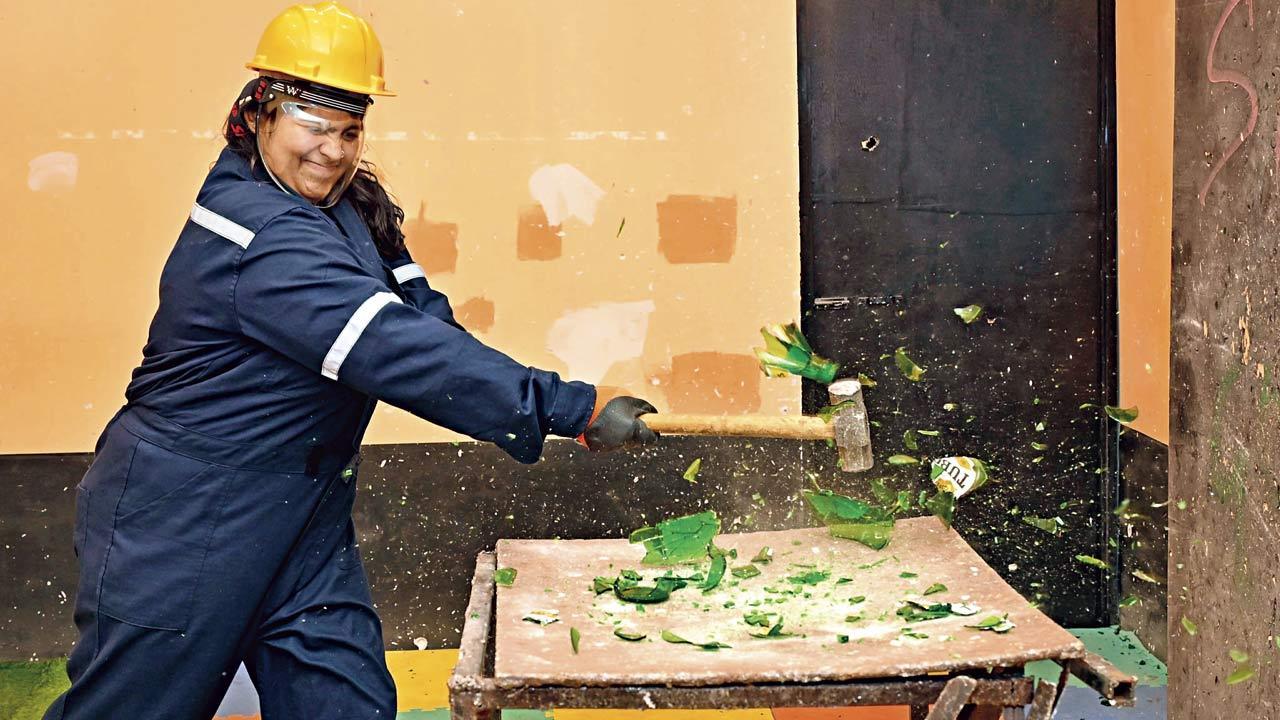Home / Sunday-mid-day / / Article /
Is this the age of female rage? Here's why Indian women are getting angrier
Updated On: 01 September, 2024 07:42 AM IST | Mumbai | Debjani Paul
Indian women, even as young as teenagers, are getting angrier, thanks to early puberty, dysfunctional families and childhood trauma. The only way out could be to break things, and learn self-defence

Shivani Sharma, 30, lets out her fury at the Rage Room in Andheri West. Sharma has battled anger since school, and uses social media as an outlet, venting over a myriad of social injustices. Pic/Satej Shinde
 Quick Read
Quick Read
Sannidhi Pai was just five years old when she yanked her cousin’s arm out of the shoulder socket after he teased her. It was entirely unintentional, but the vehemence of her rage shocked her parents and they promptly sent her for anger management therapy. Now 26, Pai, who has spent a lifetime in therapy, finds that she’s never been angrier.
She switches on the news to hear about the rape and murder of a doctor on night duty at a Kolkata hospital. It’s a case that hits close to home, as the Dahisar resident is pursuing a Masters degree in forensic psychology at Bournemouth University, UK, where she is specialising in sexual abuse and child violence. Day in and day out, she studies accounts of such violence and converses with convicted sexual abusers as part of her research. When she brings up the issue in conversations, there’s always someone who responds with “not all men”. “This makes me even angrier,” says Pai.



